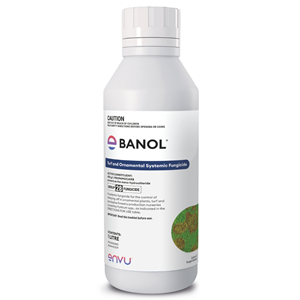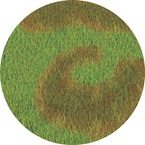Classification
Species category :Root Diseases
Scientific name: Pythium spp.
What is Pythium Root Rot?
The first symptoms of Pythium Root Rot are normally circular spots, usually between 2-5cm, however, they can reach up to 15 cm. The spots appear suddenly during warm to hot humid weather. These spots can enlarge at a rapid rate.
Leaves in these patches appear water-soaked and dark in the early morning. If these water-soaked spots are rubbed between the fingers they feel slimy. Infected leaves become light brown and shrivelled when dry. The circular patches then have a brown to bronze appearance.
When does Pythium Root Rot occur?
Warm nights (over 20°C) and hot days (over 30°C) coupled with rainy weather are the ideal conditions and when Pythium appears most severe.
Lush growth following nitrogen application is particularly susceptible to attack. Pythium is a water borne disease and more prevalent with high temperatures and excessive water – it flourishes in water-logged soil.
It is present in all soil types and just requires the right conditions to activate it and for the disease to take hold. It is often associated with the seeding period, as the additional watering during this phase provides the perfect conditions.
What damage or effect will Pythium Root Rot have?
All turf grass species are susceptible to Pythium spp. diseases but cool-season grasses are most severely damaged. There are many species of Pythium known to cause damage to turf grass.
Once the diseased patches dry, the grass withers and dies, leaving crater-like depressions in the turf which disrupt play.
Pythium spp. is also known to cause crown and root symptoms which show most commonly as general decline in the vigour of the turf grass. This decline can be on small patches or be over a large area, particularly on cool-season, intensively managed turf.
Pythium spp. predominantly affects golf and bowling greens in all turf grass species. Envu recommends using a preventative treatment such as Signature Stressgard or curative treatment such as Banol.


